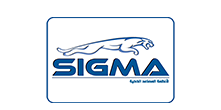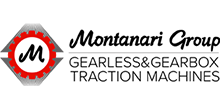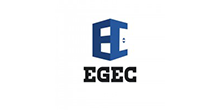Elevator
History of the elevator
The elevator technology is one of the most prominent inventions that changed the way we move in tall buildings and large structures. Its history is linked to a series of innovations and discoveries throughout the ages. In the beginning, it was just a simple way to transport people and objects by animals such as a horse or camel in some ancient societies..
Over time, elevator technology has witnessed a sustainable development, and many innovations have contributed to improving its performance and safety. In the 19th century, a series of important inventions were launched in this field, with the invention of the electric elevator attributed to Elisha Graffs Otis who invented his safe braking system in 1852. This simple invention led to the widespread spread of its systems.
Since then, we have noticed a significant development in elevator technology, which has become highly sophisticated and safe, and is used in a variety of environments from residential buildings to cloud towers and large buildings. Its history reflects an important shift in transportation technology and architecture, making it one of the essential elements in our daily lives..
In the elevator
It is a complex device consisting of a set of components that work together in harmony to achieve the safe and efficient transfer of people and objects between different roles in buildings. The main components of the elevator include::
- Cabin (box): This is the part where people and goods are few. The cab comes in various sizes and designs and is usually equipped with doors that open and close automatically.
- Motor and winch: The engine is the engine of the elevator and is usually electric. The engine moves the cab by means of a winch that connects the cab to ropes or cables.
- Brake systems: Brake systems play a crucial role in elevator safety. Brakes are in place to protect the cab and passengers from any unwanted slippage.
- Automatic Control and Control System: This system fully manages the elevator process, from opening and closing doors to regulating its speed and stop in each turn. Modern systems rely on micrometer technology and automation to achieve maximum efficiency.
In addition:
- Door glass and exterior doors: Door glass is used to monitor inside the cab, while the external doors are the gates that separate the cab and passengers in the different floors.
- Safety and alarm systems: based on advanced safety and alarm systems, including sensors to detect abnormal movement and emergency alarm systems.
These components work in harmony to provide a safe and seamless elevator experience, making it a modern and efficient way to move people and goods between floors in buildings..
Roof elevator room
Often, the elevator room is installed on the roof or the top of the building as an essential part of the elevator system. Known as the rooftop elevator room, this room comes with a range of objects and components that play a crucial role in the operation and maintenance of the elevator. The elevator room is often accessed in the roof via a ladder or through a door leading to the roof itself.
The elevator room on the roof houses important components such as the electric motor, winch and control systems. These components work together synchronously to raise and lower the cab inside the specially designed well. The elevator room on the roof is often equipped with ICT systems to monitor the performance of the elevator and detect any issues that may arise.
This room is the link between modern technology and the safety of vertical transport. It represents the main nerve of the elevator system, through which all aspects of its work are controlled. The presence of the elevator room on the roof reflects the advanced architecture and technology that we benefit from in our daily lives.
Kraft Elevators
Kravist Elevators is one of the leading manufacturers and suppliers of high-quality and sustainable elevators. Kravist Elevators was founded by a group of creative engineers and businessmen committed to providing an integrated solution in the field of transporting people and goods within buildings. Craft elevators are innovative and quality in their design and manufacture, making them a popular choice for many large projects and demanding demands..
Kravist Elevators offers a wide range of elevators to meet different needs, ranging from residential elevators to industrial elevators and special use elevators. The company relies on the latest technology and materials to ensure excellent performance and high reliability in all its products.
In addition, Kravist Elevators strives for sustainability and concern for the environment by designing elevators that consume less energy and use environmentally friendly materials. The company is also committed to providing excellent after-sales and maintenance services to ensure that its elevators operate efficiently over time..
In short, Kravist Elevators is a company that combines quality and professionalism, and it plays an important role in developing and improving the experience of using elevators and transporting people and goods safely and efficiently..
Iron cables elevators
Iron cables are an essential part of the elevator system, as they are the basis for safe and efficient cab raising and lowering. Iron cables form the basis that connects the cab to the electric motor and winch, allowing the elevator to perform efficiently.
Iron cables are usually made of chains or ropes made of steel or special alloys designed to withstand heavy weights and withstand wear and frequent use. Steel cables are strong and flexible, which makes them able to withstand the pressure and tension caused by its movement between the different floors within the building.
In addition, the iron cables are designed to meet the stringent safety and quality standards required in the elevator industry. Regularly tested and maintained for smooth and reliable performance.
Iron cables represent the critical point of connection between the mechanical and electrical components of the elevator, making it a key element to ensure that the elevator operates efficiently and safely..
Elevator operation
It is a complex process involving a variety of components and technologies that work together to move people and goods between different floors in buildings in a safe and efficient manner. Here's an overview of the elevator process:
- Control and selection: When a person presses the elevator button in the role they wish to move to, the control and steering system is activated. This system calculates the appropriate time and speed to reach the desired role.
- Doors opening and closing: When it reaches the called floor, the doors open automatically to allow passengers to go on or off.
- Riding inside the cab: After the doors are opened, passengers enter inside the cab and close the doors from the inside. Security systems are activated to ensure that doors are not closed if there is something in the way.
- Motion between turns: After the doors are closed and secured, the engine begins to pull or push the iron cables, raising or lowering the cab in the desired direction.
The process also includes:
- Standing and reaching the called floor: Once he reaches the desired turn, the cab stops and the doors open again to allow passengers to disembark or climb.
- Safety and Testing Systems: Elevators are equipped with advanced safety systems that include sensors and brakes to monitor movement and ensure the safety of passengers. Periodic tests of elevators are carried out to verify that they are working properly.
This elevator process summarizes key aspects to ensure that people and goods are transported safely and easily. It relies on advanced technology and meticulous design to ensure a comfortable and efficient user experience.
The impact of elevators on infrastructure
It is an essential technology in modern times that significantly affects the infrastructure of cities and buildings. The impact on infrastructure can be summarized in the following points::
- Improved accessibility and mobility: Its presence contributes to improving the means of accessibility to the upper and lower places within buildings. This makes buildings more accessible to people with special needs and increases mobility for everyone.
- Impact on urban planning: The increasing use of elevators affects urban planning of cities. Its presence makes it possible to build higher buildings without the need for large spaces for stairs, which increases the density of urbanization and provides more spaces for urban development..
- Economic impact: Elevators play a crucial role in the real estate sector and the economy. Vertical transportation can raise the level of luxury in buildings, increasing its attractiveness to tenants and investors.
- Technological modernization: Elevator technologies are constantly evolving, requiring constant updating of older elevators. This improves existing elevators and replaces them with more efficient and secure ones, improving public infrastructure..
- Save time and effort: The elevator contributes to saving time and effort for individuals and companies. Different roles can be accessed quickly, increasing productivity and improving quality of living .
Overall, the impact of elevators on infrastructure is attributed to improved mobility and increased efficiency within buildings and cities. This technology plays an important role in the development of urban infrastructure and enhances the attractiveness of modern cities..
Safety in the elevator
Security is critical in its design and operation. It requires providing a safe environment for passengers and objects due to the vital role it plays in providing an effective means of transporting them between different floors in buildings. Here are some important aspects of its security:
- Brake and monitoring systems: The elevators rely on a dual brake system to prevent accidents. Electric brakes and mechanical brakes are used to keep the cab in place if the power is cut off or if the system malfunctions. In addition, precise monitoring systems are used to verify that the elevator is working properly and to detect any defect or deviation in the movement..
- Important safety systems: The elevator is equipped with a range of sensors and safety systems to protect passengers and cargo. For example, these systems include overload sensing and sensing doors to prevent them from closing if something is in the way. These systems allow early detection of any problem and preventive measures.
- Regular maintenance: Regular maintenance of elevators is carried out to verify their safety and good performance. This includes inspection of mechanical and electrical parts and safety testing. Maintenance is carried out regularly and results are documented to ensure safe operation.
- Training and awareness: Training is provided to elevator workers and passengers to make them aware of how to use them safely. Passengers are instructed on basic safety and safe behaviors within the cab.
In general, these aspects are just examples of actions taken to ensure safety in elevators. Security is crucial to ensure a safe and reliable user experience for everyone.


















